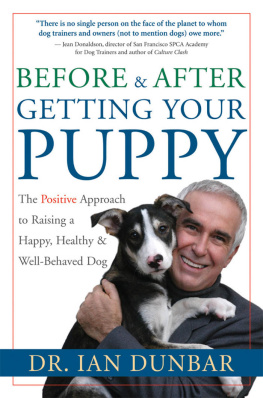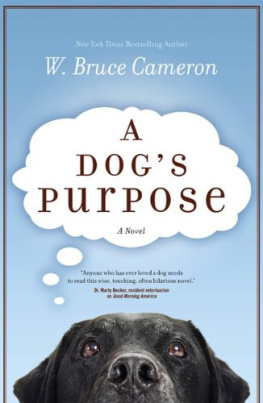Thank you for downloading this Gallery Books eBook.
Join our mailing list and get updates on new releases, deals, bonus content and other great books from Gallery Books and Simon & Schuster.
C LICK H ERE T O S IGN U P
or visit us online to sign up at
eBookNews.SimonandSchuster.com
We hope you enjoyed reading this Gallery Books eBook.
Join our mailing list and get updates on new releases, deals, bonus content and other great books from Gallery Books and Simon & Schuster.
C LICK H ERE T O S IGN U P
or visit us online to sign up at
eBookNews.SimonandSchuster.com

Gallery Books
A Division of Simon & Schuster, Inc.
1230 Avenue of the Americas
New York, NY 10020
www.SimonandSchuster.com
Copyright 2013 by Sharron Kahn Luttrell
All rights reserved, including the right to reproduce this book or portions thereof in any form whatsoever. For information address Gallery Books Subsidiary Rights Department, 1230 Avenue of the Americas, New York, NY 10020
First Gallery Books hardcover edition September 2013
GALLERY BOOKS and colophon are registered trademarks of Simon & Schuster, Inc.
The Simon & Schuster Speakers Bureau can bring authors to your live event. For more information or to book an event contact the Simon & Schuster Speakers Bureau at 1-866-248-3049 or visit our website at www.simonspeakers.com.
Designed by Davina Mock-Maniscalco
Jacket design by Janet Perr
Front cover photograph courtesy of the author
Author photograph by Meredith Albright
Library of Congress Cataloging-in-Publication Data is avalaible.
ISBN 978-1-4516-8623-4
ISBN 978-1-4516-8624-1 (ebook)
Photo credits appear and constitute an extention of this copyright page.

Contents
To the loves of my life: Marty, Aviva, and Josh

Introduction
S OMEWHERE BETWEEN THE pickles and the olives I found exactly what I was looking for: a dog. It was Mothers Day and we were returning from a visit to my in-laws. The entire family was togethera minor miracle given my husbands schedule and the fact that the older of our two children preferred to be anywhere but with us. We made a quick stop at the supermarket to buy something to grill for dinner. My husband and my son took off toward the meat counter while I headed down the condiments aisle with our teenage daughter. Thats when I spotted the dog. Or rather its tail end, rounding the corner.
In the two years since Tucker, our German shepherd, had died Id developed a full-blown case of Canine Deficit Disorder. The primary symptoms were a preoccupation with dogs and a total loss of inhibition when near one. Friends had nicknamed our home Camp Luttrell because thats where they would send their dogs every time they went away. If I drove past someone walking a dog, I would slow the car for a closer look while my children slouched in their seats with embarrassment.
So, seeing a dog in a supermarket, of all places, sprung my mania into overdrive. Oh my God, I whispered as I held out my hand to stop my daughter. That... was a dog.
Mom, dont, she pleaded, but I was already speed-walking up the aisle and skidding around the endcap. And there it was. A small yellow Labrador retriever was keeping pace alongside a young man holding a basket of groceries. They stepped into a checkout line, the dog waiting serenely for their next move. It wore a bright blue vest with the words NEADS Puppy-in-Training.
This is where the story begins.

Get It
M Y DAUGHTER SAYS I threw myself at the man with the yellow Lab, but she tends to be overly dramatic. I distinctly remember keeping a respectful distance as he described his role as a volunteer puppy raiser, even if it did require I clasp my hands behind my back to physically restrain myself from patting the dog.
If it had been a few years earlierwhen Tucker was still alive, the kids little, and my in-laws healthyI wouldnt have reacted so strongly to the sight of the dog. Sure, I would have been curious, but my mild social anxiety would have kept me from speaking up. Instead, I would have strolled by as many times as it took to make out the words on the dogs vest before retreating back to my shopping list. But on that day, I was feeling desperate. I should have been content. I had a husband who loved me, a good job, two healthy, relatively happy children. But I couldnt enjoy being with my family that day because the fact that the four of us were together only underscored how rare an occurrence that had become. Our kids were growing out of childhood and pulling me grudgingly along with them. Soon enough, they would be grown and gone, and with them, much of what defined me for the past decade and a half. Without them, Id have to somehow figure out who I would be next. The sight of the dog offered if not the answer to my fears of the future, a pleasant diversion from them. And at the very least, a possible cure for my CDD.
The man unloaded his groceries onto the belt as he described the National Education for Assistance Dog Services (NEADS), which trains service dogs. Id heard of NEADS, had even covered one of its graduations years earlier when I was a newspaper reporter. But back then, NEADS only trained dogs to alert their hearing-impaired owners to sounds like alarm clocks and crying babies. I hadnt realized that in the years since, it had expanded its mission to train dogs to assist with a range of disabilities: multiple sclerosis, spina bifida, autism, post-traumatic stress disorder. There really was no limit to whom the dogs could help.
These days, most of their puppies are trained by inmates in prisons and released on weekends to volunteers like the man in the supermarket, who by now had pulled out his wallet to pay the cashier. I said good-bye and he urged me to visit the NEADS website to learn more. I returned to my daughter, who was lurking two lanes away, pretending to study the cover of Diabetic Living.
THAT EVENING AFTER dinner, I settled in front of my computer and clicked around on the NEADS website until I found the page for the Prison Pup Partnership. I learned that NEADS places puppies in select prisons throughout New England, where inmates train them to be assistance dogs. The inmate dog handlers have the most coveted job in prison. In exchange for raising and training a puppy, they get three dollars a day and their own cell to share with their dog. Over the course of twelve months or so, these specially chosen inmates are responsible for housebreaking their puppies and teaching them basic obedience before moving on to more specialized tasks with help from a professional trainer: teaching their dogs to pick up dropped coins, turn light switches on and off, push elevator buttons with their noses, get the phone when it rings, open and close doors, and fetch items from a refrigerator. Because inmates have all the time in the world to devote to their jobs, theyre able to train their dogs in about half the time it would take a professional dog trainer, and at significantly reduced cost.
Next page













